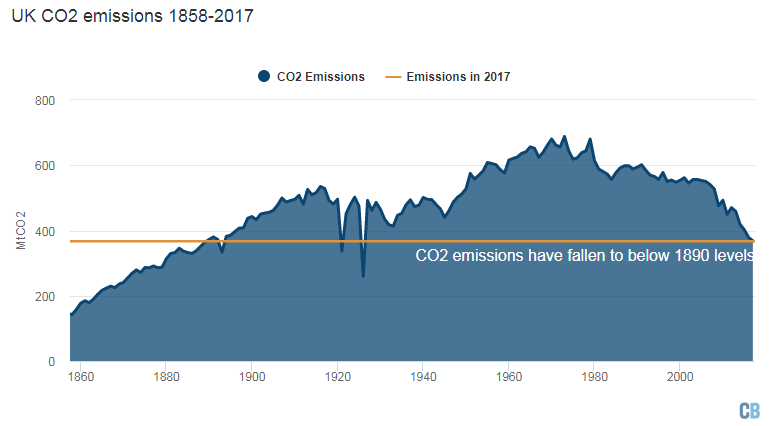UK carbon emissions at lowest level since 1890
Fresh analysis has highlighted the dramatic fall in carbon emissions within the UK, reaching a new low unseen in normal times for 128 years.

Fresh analysis has highlighted the dramatic fall in carbon emissions within the UK, reaching a new low unseen in normal times for 128 years.
The findings are based on figures from the UK’s Department for Business, Energy and Industrial Strategy, and analysed by the Carbon Brief website.
The data shows that carbon dioxide emissions from fossil fuels declined by 2.6 percent in 2017, following a 5.8 percent drop in the previous year.
This means that the UK’s carbon emissions are now the same as when Vincent Van Gogh died, or Oscar Wilde’s The Picture of Dorian Gray was first published.
Emissions have been falling steadily since 2012 driven by aging coal plants being taken offline. The rise in renewable energy has also dampened the use of fossil fuels; 2017 saw low-carbon sources, including nuclear power, reach 50 percent of electricity generation for the first time.
Coal now only accounts for 5.3 percent of primary energy consumption, according to the analysis. This is down from 22 percent in 1995.
“With coal quickly disappearing in the UK and other fossil fuel use mostly flat, emissions have continued their steady decline. Overall, CO2 emissions have declined faster in the UK since the early 1990s than in almost any other large economy”, said Zeke Hausfather, an analyst at Carbon Brief.
Three miners’ strikes provided a brief lull in carbon emissions, which are seen as exceptions to the rule. The analysis also doesn’t cover so-called ‘imported’ emissions associated with purchased goods from outside the country.
Britain’s coal use, a significant driver of carbon dioxide emissions, reached its peak in 1956 at 221 million tonnes. As of 2017, this figure has declined to an astonishing low of 15 million tonnes.
Overall the UK’s carbon emissions are 38 percent lower today than they were in 1990. However, they need to decrease to 80 percent by 2050 to meet the country’s legally binding Climate Change Act.
Full details on the methodology used can be found here.
Photo Credit: Matteo Fusco




